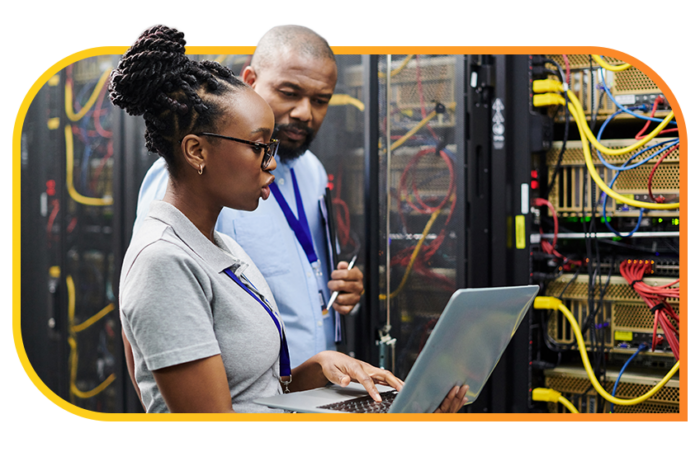Going meta: Use 2023 to bridge to your organizational future

One of the biggest business issues of 2022 was the question of workers’ return to the office after two years of pandemic-driven disruptions and the mass shift to working from home. The issue stayed in the headlines for several reasons. Different enterprises took different approaches. Some organizations called for a return to “normal,” but for others the in-office requirement was a source of tension between management and a workforce that grew comfortable with working from home.
I will step around any fraught issues of management’s fear of losing control over workers’ time. The economic results of the last couple years debunk any myth that workers can’t be productive without someone looking over their shoulders. Full disclosure, I’ve been part of a hybrid workforce for many years, using a home office for much of my work and going into Lumen’s local offices when projects need it. In fact, many of Lumen’s employees fit the hybrid mold long before it was a trend. We get together physically when we need to, but we get most of our work done in a hybrid environment.
So, why was a potential return to the office such a story in 2022?
Over the last two years, many teams simply developed new ways of working together. And they’re looking to move forward, building on these new workflows rather than go back to the way things used to be. I wonder if these headlines and corporate tensions are masking the first serious economy-wide discussion of how organizations will operate – and more importantly, innovate – in the future.
Viewed in that light, we may have new organizational and technology goals to set for 2023.
Into the Metaverse
I wrote recently about security in a world of hybrid workforces. New frameworks such as Secure Access Services Edge (SASE) and Zero Trust Architecture will help secure the core by moving security to the edge. These approaches match processes to the way enterprises actually function in a hybrid world.
What about innovation in a hybrid environment? Another idea much discussed in 2022 may provide a way forward. The consumer metaverse is a vision that Meta and other companies are pitching—where we engage in immersive social interactions, gaming, and other entertainment-based activities. It’s social media by way of Second Life, a virtual space consumers can interact as avatars while brands market to them. Not sure how useful that is to me as a member of the workforce.
Let’s talk about the “enterprise metaverse” instead.
The enterprise metaverse is essentially a digital twin of the physical enterprise, allowing employees to gain real-world experience and training from their desks by augmenting or virtualizing reality, to enabling mass simulations of industrial processes using data from the physical world. Organizations large and small could benefit from these virtual spaces. I recently spoke to Olivia Ramos, CEO of Deep Blocks, on Light, Data, Action, the podcast I host, about the benefits of digital twins, which is the foundation for an enterprise metaverse. I encourage you to listen to the whole podcast, but I want to build on some of that discussion here.
Let’s start by defining the enterprise metaverse. It is:
- A collaborative platform: Just like the conventional idea of the metaverse is immersive social interactions on steroids and entertainment-based virtual worlds, the enterprise metaverse enables next-generation employee experiences, collaboration and data sharing. There may be avatars interacting, but the purpose is quite different from the consumer concept. All aspects of an enterprise—assets, processes, people – can be replicated digitally. Those avatars are building things, demonstrating new ideas or manipulating digital representations of things from the real world.
- A virtual-real world intersection: The enterprise metaverse has a strong connection to the physical world. It draws data from the real world for manipulation, consumption or simulation of some aspect of the physical world in its virtual space. From that perspective, the enterprise metaverse becomes the digital twin of a process, an organization, some machinery or some other tangible real-world item that would be difficult, costly or disruptive to revenues to play around with in the real world. The output of the metaverse interaction aims to affect some aspect of the real world.
- An organizational compression of time and space: Just like videoconferencing allows the right people to get on a call, the enterprise metaverse enables the right people – no matter where they are – to share their knowledge, data and ideas in a much more tangible way than simply projecting Powerpoint slides.
To achieve all this will require lots of computing power, powerful networks and edge compute to avoid latency on sophisticated applications and their interactions. How might this be used?
Enterprise metaverse use cases
You can easily imagine engineers getting together to design a piece of hardware. Or think of automobile designers fixing a flaw in a part that requires a team effort.
We know that workflows are changing in enterprises large and small. They’re changing because of AI and automation, the Internet of Things (IoT) and new technologies. The enterprise metaverse provides a way to model those changes in advance to design the most efficient workflows in advance.
Think of hospitals moving from paper records to electronic health records and secure messaging apps on their phones or other smart devices. Because of the literal life and death stakes, there can be understandable resistance among staff to new processes. In the enterprise metaverse, they can design and simulate the new workflows themselves and see the benefits to patients as well as the hospital—before implementing changes in the physical world.
I want to emphasize that I’m not just talking about a shared whiteboard in these scenarios. The enterprise metaverse draws on real-world data to become a simulacrum of the physical world – but one that can be manipulated by the team involved.
2023 planning and beyond
Is all this going to happen in 2023? No, but the groundwork can start getting laid. One of the things I hear from customers is that in the last two years they implemented a decade’s worth of projects because they had to in order to survive. Where do they go from here?
The answer is to go forward. That doesn’t necessarily mean that we’re going back to the office.
What could you do in your own metaverse? Have your avatar call my avatar and we’ll figure it out.
You can listen to all of Terry’s “Light, Data, Action!” podcast episodes.
This content is provided for informational purposes only and may require additional research and substantiation by the end user. In addition, the information is provided “as is” without any warranty or condition of any kind, either express or implied. Use of this information is at the end user’s own risk. Lumen does not warrant that the information will meet the end user’s requirements or that the implementation or usage of this information will result in the desired outcome of the end user. All third-party company and product or service names referenced in this article are for identification purposes only and do not imply endorsement or affiliation with Lumen. This document represents Lumen products and offerings as of the date of issue.






